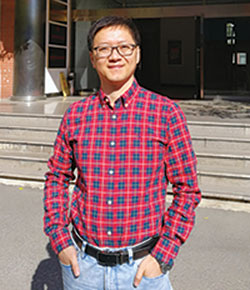 One of the great stories of higher education worldwide is the rise of China’s universities in global esteem. In 2004, only five mainland China universities were ranked in the Top 200 WUR (World University Rankings) when the London-based higher education rating and rankings agencies Quacquarelli Symonds and Times Higher Education published their first league table jointly.
One of the great stories of higher education worldwide is the rise of China’s universities in global esteem. In 2004, only five mainland China universities were ranked in the Top 200 WUR (World University Rankings) when the London-based higher education rating and rankings agencies Quacquarelli Symonds and Times Higher Education published their first league table jointly.
In the latest QS WUR 2019, China’s Tsinghua and Peking universities are ranked #17 and #30 respectively. Moreover another nine Chinese universities are ranked among the Top 100. Only two countries — the US (33) and UK (18) — have a greater number of universities in the QS WUR 2019 Top 100 league table. Similarly in the Times Higher Education (THE) WUR 2019, Tsinghua is ranked #22, above all Asian universities, and Peking University #31. Altogether 72 Chinese universities are ranked in THE’s league table of 1,250 world-class universities, the largest number among all Asian countries, with seven ranked in the prestigious Top 200. The seeds of the rapid rise in global esteem of China’s C9 (‘Ivy League’) universities were planted by a Central government initiative of May 1998 christened Project 985.
According to data of the Central government’s ministry of education there are 2,914 colleges and universities in mainland China, with over 20 million students who have passed gaokao (National Higher Education Entrance Examination) — arguably the world’s most competitive school-leaving exam. School-leavers who top the annual gaokao are accepted by top-ranked universities. For example, of the 9.75 million school-leavers who wrote gaokao in 2018, only 160,000 entered Project 985 universities.
Despite lip service to egalitarian higher education, China’s higher ed institutions are divided into three types: Project 985, Project 211 and others. The first group (39 universities) attract gaokao toppers, the largest amounts of funding and the biggest share of educational resources, including best faculty.
Project 211 was launched three years earlier in 1995 to raise science research standards in 100 selected universities in the 21st century (211). Since then, the number of Project 211 varsities which have met prescribed software and hardware installation benchmarks and have crossed scientific research, education quality and management thresholds, has risen to 116. These universities host 80 percent of doctoral and 66 percent Masters students, 50 percent of overseas students and consume 70 percent of scientific research funding.
Evidently dissatisfied with the inability of Project 211 universities to advance upward in the QS, THE World University Rankings league tables, in May 1998 — the centenary year of Peking University — the Central government launched Project 985 to create a more elite group of universities drawn from Project 211 members. Between 1998 and 2011 when Project 985 closed its doors, the government included only 39 institutions in this group. Under Project 985, enormous funding was canalised into these selected universities. Tsinghua and Peking, for example, each received around RMB 2 billion (Rs.2,108 crore) to improve their teaching facilities, build new scientific research centres, attract world-famous experts and visiting scholars, and send their faculty and students to conferences abroad.
In 2009, the first nine founding universities of Project 985 formed the C9 League. These are China’s super-premium universities receiving substantial funding from both national and local governments. According to official statistics, although they host 3 percent of China’s research scholars, they receive 10 percent of the national research budget and produce 20 percent of China’s cited academic papers. They are also allocated ad hoc grants, and special privileges for sharing resources with each other.
With the top leadership of the CPC (Communist Party of China) and the government sold on the idea that sustaining the republic’s growth momentum is substantially dependent upon improving the education system — government (Central plus local) expenditure on education rose from 2.87 percent of GDP in 2000 to 4.14 percent in 2017 — in 2015, a new national strategy titled the Double First Class University (DFCU) plan was announced by the government with the purpose of creating a group of first class universities and world-class faculties by the end of 2050.
The full list of the DFCU universities was released by the ministry of education in September 2017, and includes 42 first class universities (mostly Project 985 institutions) and 95 first class university faculties (with 465 world-class faculties developed in 140 mostly Project 211 universities). Under the DFCU plan, Peking and Tsinghua are the giants, with 41 and 34 first class faculties respectively. Gradually the DFCU plan will subsume Project 211 and Project 985.
Although younger compared to other world-topper universities, Peking University (estb.1898) and Tsinghua University (estb.1911) and other leading Chinese universities have been growing very fast in the new millennium. Evidently, China’s central leadership believes that developing the strength and international competitiveness of the higher education system is critical for realising the Chinese dream and rejuvenating the nation.
(Li Liang is deputy director of the Department of Foreign Language Books Publication of the Beijing Language and Culture University Press)



























